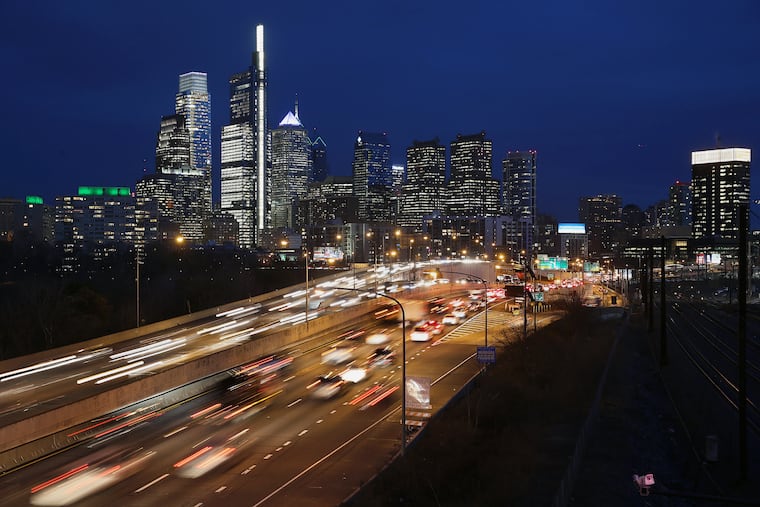Philadelphia-area vehicle emissions have grown by 22% since 1990, report says
Philadelphians concerned about climate change might want to look in the mirror. Since 1990, the amount of greenhouse gas emissions produced by autos and trucks in the Philadelphia metropolitan area has grown significantly, outsripping population growth, according to a news report.

Philadelphians concerned about climate change might want to look in the mirror.
Since 1990, the amount of greenhouse gas emissions produced by autos and trucks in the Philadelphia metropolitan area has increased faster than the population has grown, according to a New York Times analysis of a Boston University database.
The analysis included national data on carbon dioxide emissions from passenger and freight traffic on every road in the 100 metropolitan areas with the highest total emissions. The data were taken from Boston University’s Database of Road Transportation Emissions, which contains three decades of CO2 estimates.
Carbon dioxide is the chief contributor to climate change, according to nearly all scientists.
The data reveal that the Philadelphia region has done little to curb emissions, though voters here lean toward political leaders who have called for government action on climate change.
Philadelphia falls somewhere in the middle of the national pack, with a rise of 22% in emissions. More tellingly, the per-person increase is 9%, meaning more people are burning more fossil fuels. The Philadelphia metropolitan region includes the city’s immediate western suburbs, a swath of South Jersey, and part of Delaware.
“Even as the United States has reduced carbon dioxide emissions from its electric grid, largely by switching from coal power to less-polluting natural gas, emissions from transportation have remained stubbornly high,” the Times report states.
Nearly 60% of those emissions come from 250 million passenger cars, SUVs, and pickup trucks, the article states, basing the finding on data from the U.S. Environmental Protection Agency. Freight trucks contribute 23%.
As might be expected because of their size, New York City and Los Angeles lead the pack of metro areas in total fossil fuel use by vehicles. The New York metro area saw a 27% rise in overall emissions since 1990 and a 9% rise per person. Los Angeles saw a 16% rise in overall emissions but a 2% drop per person.
Overall, the data show a significant dip in emissions during the last recession, when high unemployment led to less gasoline consumption, but a steady climb since the economic recovery.
That could be due to low gas prices and the popularity of SUVs and pickup trucks, which burn more gas than passenger cars. The EPA under the Trump administration is expected to roll back auto efficiency standards soon, which is expected to mean even higher emissions.